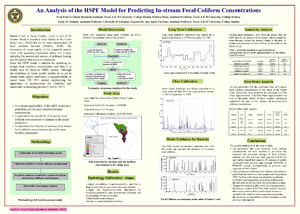| dc.description.abstract | Saludo Creek in Bexar County, Texas is one of 65 streams listed as impaired water bodies in the Clean Water Act’s 303(d) list for its high concentration of fecal coliform bacteria (TNRCC, 1998). The restoration of water quality of the impaired streams starts with acquiring knowledge about the system, including the amount and sources of pullutant loading and the sources that are to be controlled.
Since the HSPF model is suitable for modeling in-stream fecal coliform concentrantion and thus it is widely used for bacterial TMDL studies. Although the usefulness of water quality models as an aid in stream qater quality restoration is unquestionable, in recent years US EPA started emphasizing the importance of incorporating the variability and uncertainty in modeling process (USEPA, 1997). | en |


